People
Of El Greco and Emoticons: An Interview With Artist Austin Lee
The artist says he's neither a luddite nor 'super keen.'
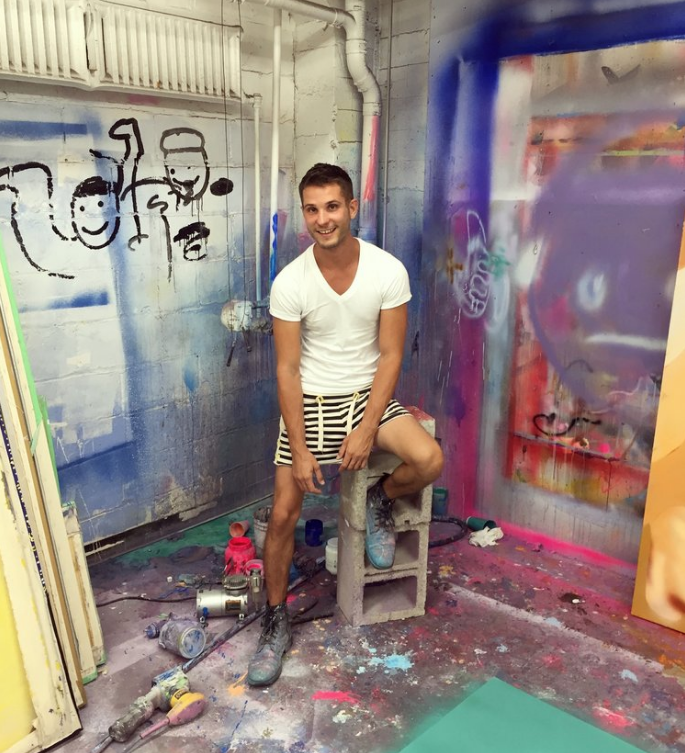
The artist says he's neither a luddite nor 'super keen.'

Flora Alexandra Ogilvy

This interview was first published on Arteviste. It has been lightly edited.
![]()
Austin Lee is an American artist known for his playful, airbrushed acrylics. Introduced by a mutual friend in London, the Pop artist Philip Colbert, we met at his studio in Long Island City, Queens. Combining technology and art, Austin describes himself as “a computer nerd as well as an artist,” and the proof was in his digital preparatory sketches. Austin thinks of his paintings as sharing an isolated moment, keeping it alive and making it timeless. As he sees it, “I’m always pushing forward, because art is a language that people add to. If people emulate my work then that’s a positive thing, it’s very complimentary.”
In terms of influences, Austin draws from popular culture and films and although his natural talent is for painting, his first love was music (upon telling me this, he offers to make me a Spotify playlist).
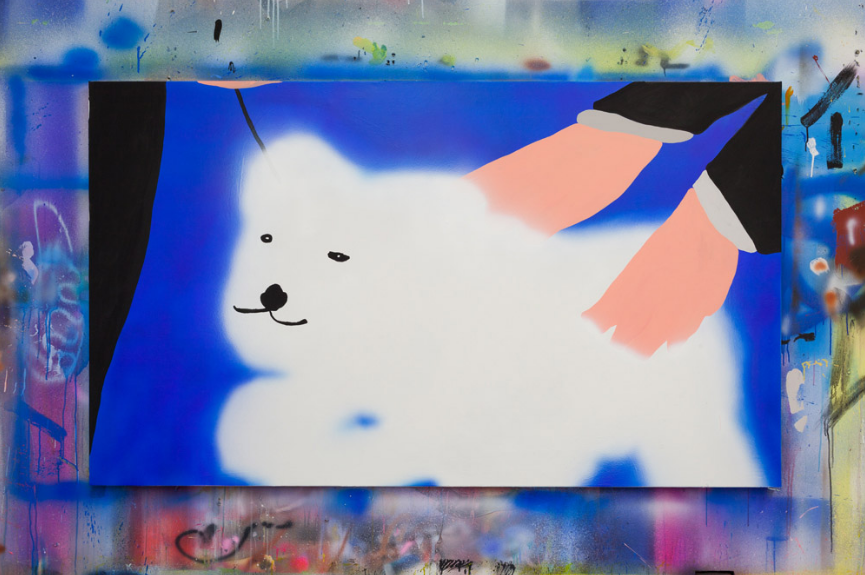
Image courtesy of the artist.
He’s also famous for his Instagram presence, seeing the platform as both a visual diary, and a way to connect people. However, he fears that the censorship of social media means that we’re not as exposed to the wider web as we used to be when he was making websites as individual works of art.
As an artist, Austin always tries to find the best of both worlds, balancing traditional art practice and technology, describing himself as, “neither a luddite nor super keen.” In fact, he also draws from art historical references like a classical appreciation for unfinished works.
In terms of process, Austin begins with traditional pen and paper sketches, working more from experiences rather than life—although he used to make airbrushed portraits. He also experiments with technological advancement using 3D printers and has a digital sketchbook, which presents an augmented reality when your iPhone moves across the page and 3D images appear.
He does however believe that there must be a transformation from the digital to the real to make his work good. Although his work has a specific purpose, he also keeps part of it open-ended so that his audience can contribute their insight. It does however have to feel that there can be nothing more done to improve a work of art, before he can share it.
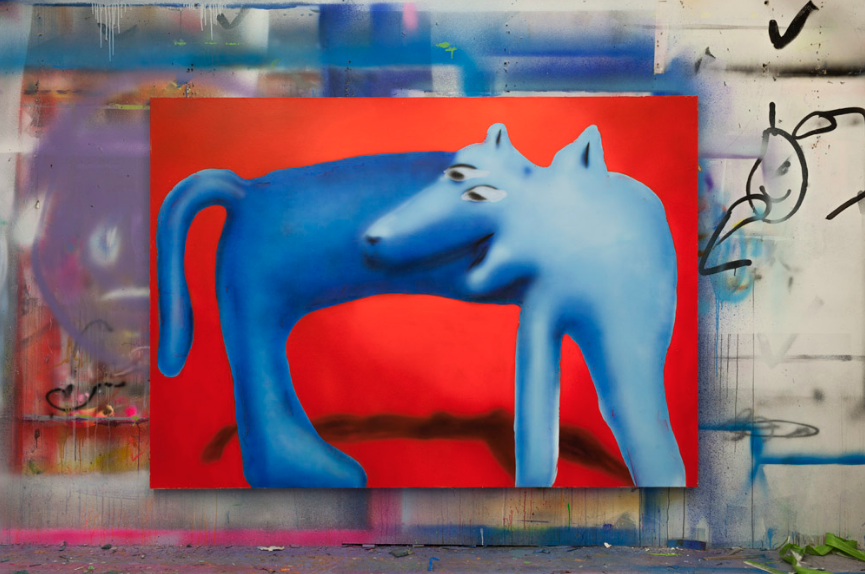
Image courtesy of the artist.
Austin has exhibited with Postmaster’s Gallery, New York as well as Carl Kostyal’s galleries in Stockholm and London. In terms of influences, he’s inspired by Pop artists like Philip Guston, Roy Lichtenstein, and Mary Heilmann as well as traditional influences like Leonardo da Vinci’s Ginevra de’ Benci. Not to mention Pablo Picasso, Alex Katz and Elizabeth Murray amongst others.
When it comes to New York museums, Austin visits the Whitney, the Metropolitan, the Studio Museum, the Met Breuer and of course his neighboring MoMA PS1. To escape the isolation of the studio at the end of the day, he socializes in Brooklyn. But by morning, he’s back in there surrounded by his paints and complex computer systems. Look out for exhibitions coming up in LA, Shanghai, and Japan @austinleee.
Was there a pivotal moment when you decided to follow your path as an artist?
Yes, when I quit my day job. I was supposed to fly somewhere for a meeting, but I woke up and realized that if I went on the trip I might not finish the paintings for my next show. I skipped the flight and never looked back.
Can you tell us about the process of making your work?
Stuff happens. I do a drawing in my sketchbook and then I work it out on a computer using lots of different software and make a painting based on that. The order sometimes changes. It’s basically lots of drawing.
What piece of your artwork would you like to be remembered for?
Am I dead? If I’m dead I don’t care. If I’m not dead it’s something I haven’t made yet.
If you could work within a past art movement, which would it be?
I’d rather be working towards a future art movement.
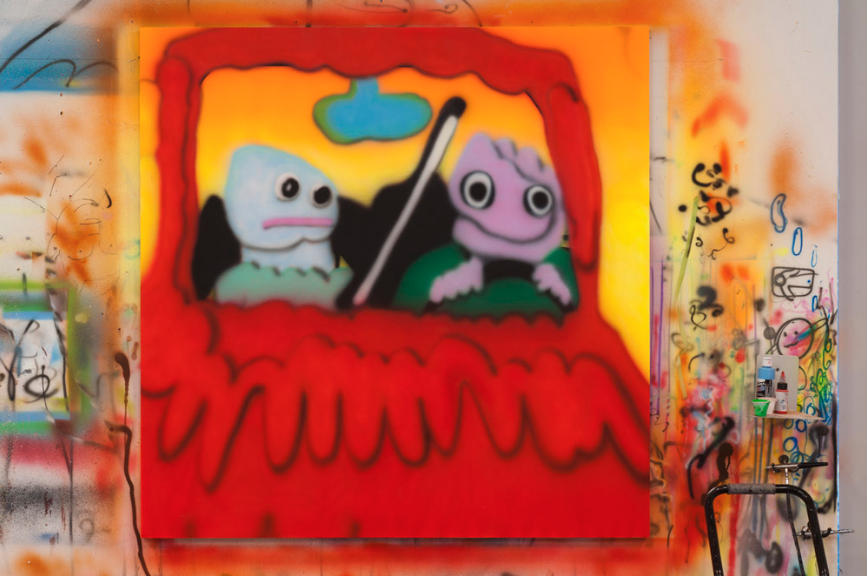
Image courtesy of the artist.
How would you define beauty in 140 characters or less?
An experience that was worth your time.
Do you have a favorite photograph or painting, which inspires you?
YES, it’s Portrait of Ginevra Benci by Leonardo da Vinci. I just love that painting.
What is your greatest indulgence in life?
MUSIC. I am always listening to music.
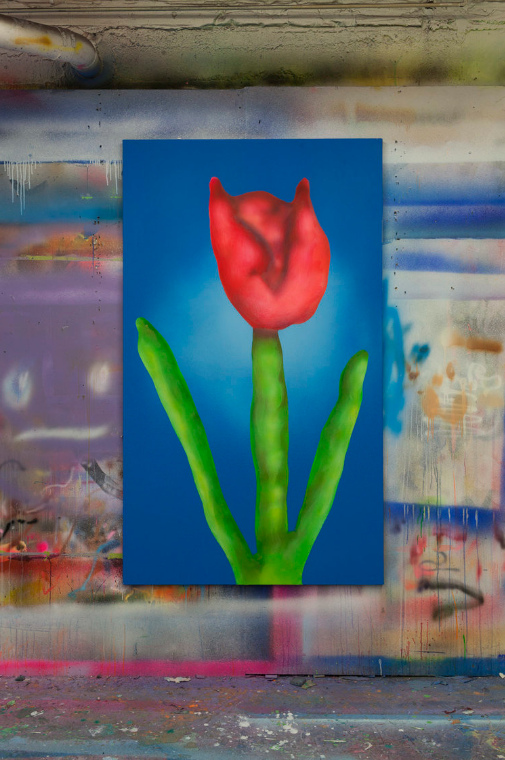
Image courtesy of the artist.
Which artist of the past would you most like to meet?
David Hockney. I picked him, because I might still have a chance to meet him.
Do you interact with the digital world/technology in your work?
Of course—that’s all I do.
Have you ever had a moment when you questioned your career entirely?
No, when I had a day job I was 100 percent sure that I didn’t want to be doing that with my life.
What is your favorite art gallery in New York and why?
It’s called Fun Junction and it’s in my backyard, but hasn’t happened yet. It’s a sculpture garden. I’ll probably do a show soon. My landlord put a crazy huge sign he found in the yard that says FUN JUNCTION. That is where the name came from. IT’S A SIGN! :O
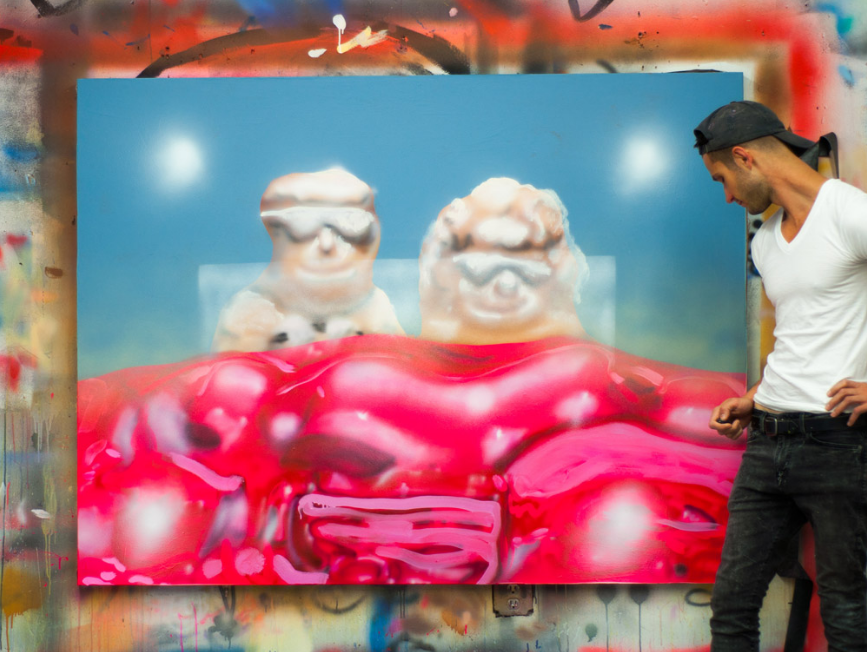
Image courtesy of the artist.
Why do you make and receive studio visits?
The studio is where I feel the most comfortable and I like to show off what I’ve done. It’s helpful to see how people respond and what they say. I learn a lot from anyone who comes to visit. Same for going to other artists’ studios. I like to talk to them about what they are up to.
What visual references do you draw upon in your work?
Anything really. From emoticons to a subway or an El Greco painting.
What is your daily routine when working?
Wake up. Get a coffee. Go to the studio. Eat lunch. Studio. Dinner. Studio. Bed. This can change if another human contacts me.
What advice would you give to a young artist following in your steps?
¯\_(ツ)_/¯
If any young artists are reading this, they can email me with specific questions and I will give them bad advice directly. My email is: [email protected] I used to reach out to older artists or peers when I was younger and everyone I contacted was always helpful and generous and some are now friends (contacting artists you are interested in is the advice).
Do you find that New York’s art scene inspires or influences your art?
New York is a mix of all the best and worst things. It’s fast and fun and there are a lot of people. More happens here in a week than 6 months in any of the other places I’ve lived. Art and life are connected, because if you are making good art where you live then what you experience will affect what you make.
Why do you love what you do?
I love making new images that I haven’t seen before. It’s similar to when I hear a new song for the first time. I’m always looking for that exciting and unknown feeling.
Flora Alexandra Ogilvy is the founder of the digital arts platform Arteviste, which supports the emerging art market across London, Berlin, and New York.